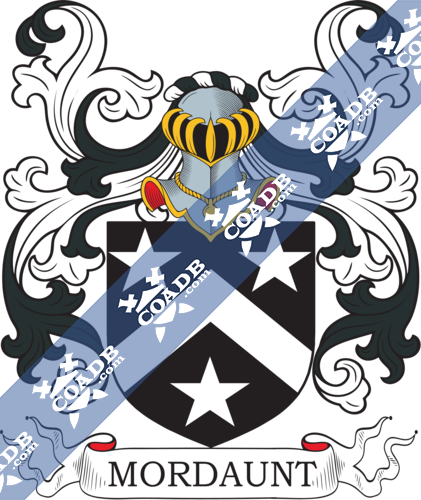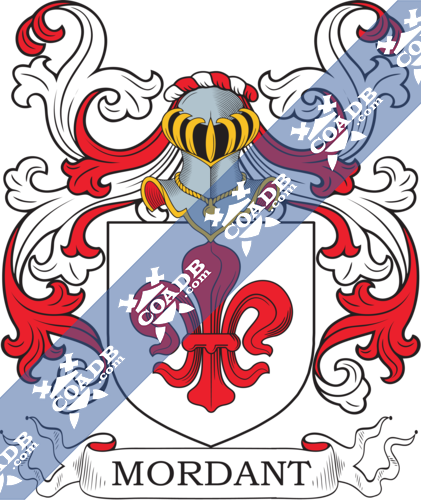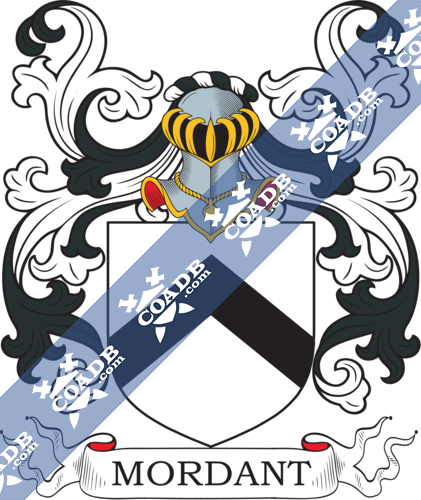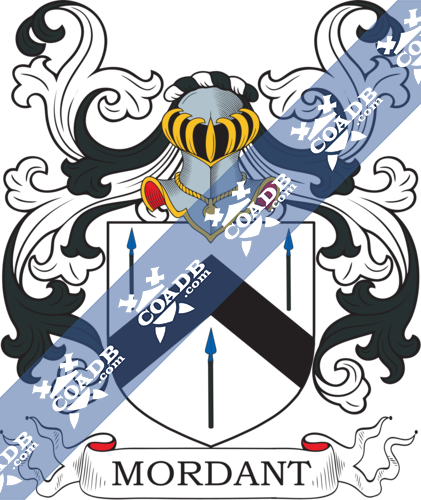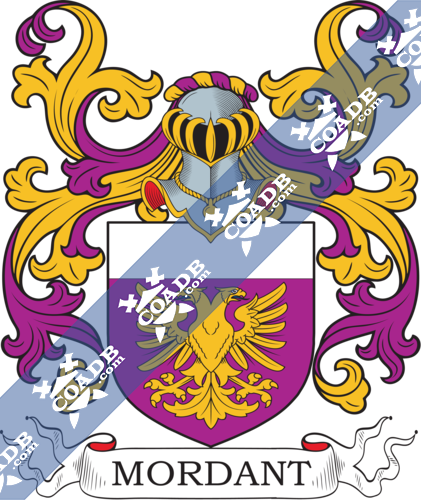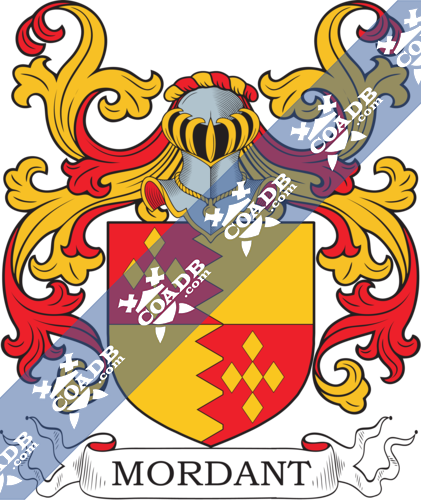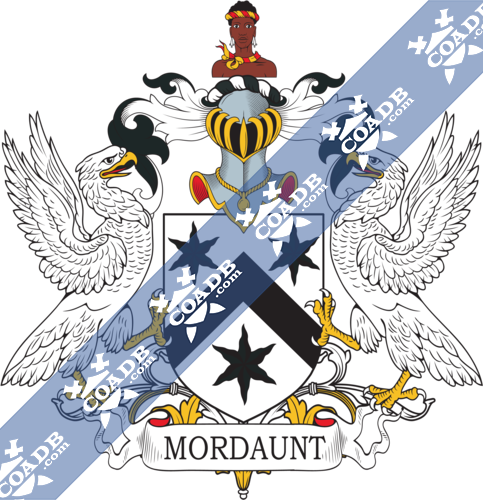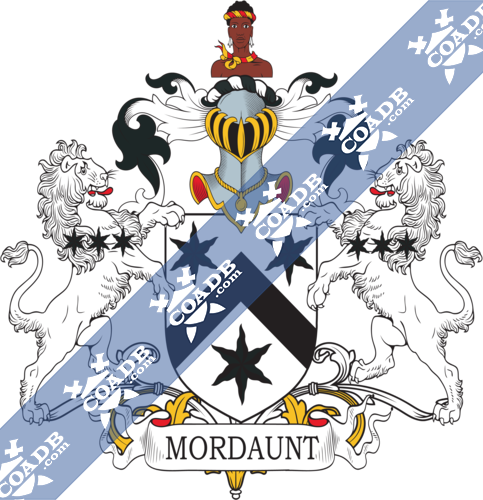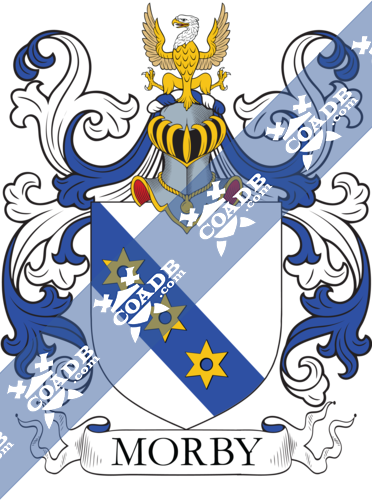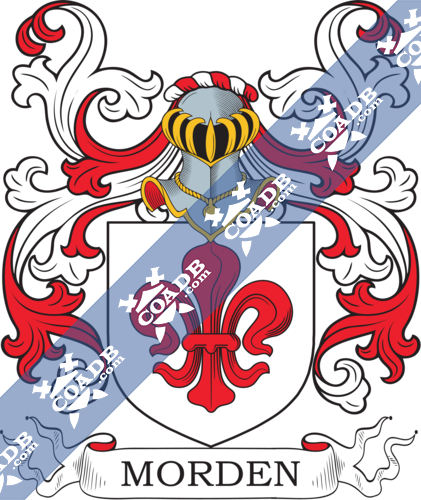Mordaunt Family Crest, Coat of Arms and Name History
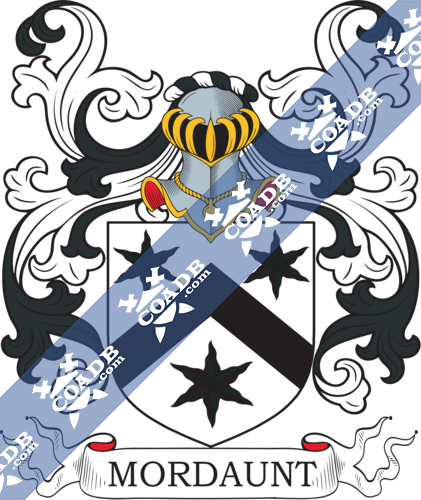
Mordaunt Coat of Arms Gallery
Don’t know which Coat of Arms is yours?
We can do a genealogical research. Find out the exact history of your family!
Learn MoreMordaunt Origin:
England, France, Italy
Origins of Mordaunt:
Listed as Mordant, Mordaunt (English), Mordagne, Mordant (French) and apparently Mordanti in Italy, this is a surname of French origins. According to the famous Victorian etymologist Canon Charles Bardsley writing in the year 1880, the name was originally Norman, and introduced into England by a supporter of Duke William of Normandy, when he conquered England in 1066. He demanded that the name means or meant in the 12th century ‘The biter,’ a reference it would seem to a person who succeeded as a result of another person’s misfortune. This is a possible explanation, and the name does seem to acquire from a combined form of ‘mort d’entaille’ or something similar, literally meaning ‘death by cuts.’ However, early records in both France and Italy are usually random or non-existent. In Italy because basically it did not become a united division until 1860, and even then, it was many years before centralized recording placed, while in France, most early recordings and registers were intentionally damaged by the Revolutionaries in 1792. Such records as exist would seem to contain as Osbert le Mordaunt of Bedfordshire, England in 1199, Edward Mordant who was a student at Oxford University in 1575, and Jean Baptiste Mordant, named at Montherme in the Ardennes, in October 1791.
Variations:
More common variations are: Mordant, Mordaint, Mordannt, Mardaunt, Mordount, Mordianto, Mordianti, Mordand, Mordand, Mordent, Mardant
England:
The surname Mordaunt first appeared in Bedfordshire (Old English: Bedanfordscir), located in Southeast-central England, previously part of the Anglo-Saxon kingdom of Mercia. “Turvey in Bedfordshire was the principal seat of this noble Norman family, ancestors from Osbert le Mordaunt, who came over from Normandy with William the Invader, and received a grant of the lordship of Radwell in that division.” Another reference is more special as “their patriarch was Sir Osbert le Mordaunt, who held Radwell, co. Bedfordshire, by the gift of his brother, who had received it from the Conqueror, for services regarded by himself and his father.” The church of Mordon (Morden) in Durham was home to another branch of the family. “This place gave a name to a resident family, of whom mention occurs in the 14th century. The origin of surnames during this period became a necessity with the introduction of personal taxation. It came to be known as Poll Tax in England. Surnames all over the country began to develop, with unique and shocking spelling variations of the original one.
Ireland:
Many of the people with surname Mordaunt had moved to Ireland during the 17th century.
New-Zealand:
Some of the population with the surname Mordaunt who arrived in New Zealand in the 19th century included Mordaunt arrived in Auckland, New Zealand aboard the ship “Viscount Canning” in the year 1865.
Here is the population distribution of the last name Mordaunt: Swaziland 655; South Africa 548; United States 297; England 258; Australia 113; Ireland 109; New Zealand 57; Canada 39; Scotland 39; Netherlands 13.
Notable People:
David Mordaunt (born 1937), was an old English cricket player.
Elinor Mordaunt (1872–1942), was an English author, writer, and traveler.
Gerald Mordaunt (1873–1959), was an English cricket player.
Harry Mordaunt (1663–1720), was an English lieutenant-officer.
Harriet Mordaunt (1848–1906), was a wife of Sir Charles Mordaunt.
Henry Mordaunt, 2nd Earl of Peterborough (1621–1697), was an English soldier, Lord, and servant.
Sir Henry Mordaunt, 12th Baronet (1867–1939), was an English cricket player.
Blazons & Genealogy Notes
1) (Turvey, co. Beds; descended from Sir Osborne Le Mordaunt, temp. William I., whose grandson, Eustach Le Mordaunt, m. Alice de Alueto, eldest dau. and co-heir of Sir William de Alueto, Knt., of Turvey). Ar. a chev. betw. three estoiles sa.
2) (Earl of Peterborough and Baron Mordaunt; earldom extinct 1814; barony passed to the Duke of Gordon, d.s.p. 1836; since in abeyance. Sir John Mordaunt, Knt., of Turvey, grandson of William Mordaunt, Esq., of Turvey, temp. Edward IV., was summoned to Parliament 1532. John, fifth Lord Mordaunt, was created Earl of Peterborough 1628). Motto—Nec placido contenta quiete est. Same Arms. Crest—A blackamoor’s head affrontee couped at the shoulders ppr. banded with a wreath round the temples or and gu. and ribands of the same. Supporters —Two eagles, wings expanded ar.
3) (Earl of Monmouth, merged in the Earldom of Peterborough 1697. Hon. John Mordaunt, second son of first Earl of Peterborough, was created Viscount Mordaunt 1659; his son, the second Viscount, was created Earl of Monmouth 1689, and s. as third Earl of Peterborough 1697). (Massingham, со. Norfolk, bart.; descended from William Mordaunt, second son of William Mordaunt, Esq., of Turvey, temp. Edward IV.). Motto—Ferro comite. Same Arms and Crest. Supporters—Two lions ar. each charged on the shoulder with three estoiles barways sa.
4) (Carrick, co. Clare; Fun. Ent. Ulster’s Office, 1623, Sir Nicholas Mordaunt, Knt., of Carrick). Sa. a chev. betw. three mullets ar.
5) (Ricklemarsh, co. Kent). Ar. a fleur-de-lis gu.
6) Ar. a chev. sa.
7) Ar. a chev. betw. three spears sa. points az.
8) Purp. an eagle displ. with two heads or, a chief ar.
9) Quarterly, per pale indented gu. and or, in the 1st and 4th quarters five lozenges conjoined in cross of the second.

